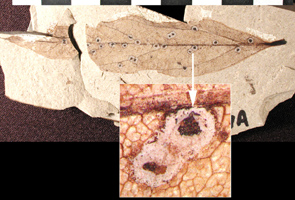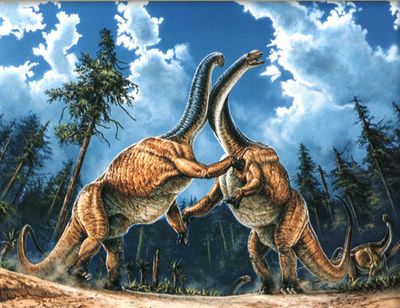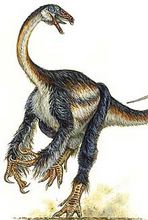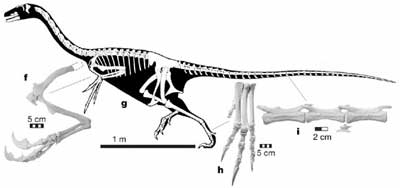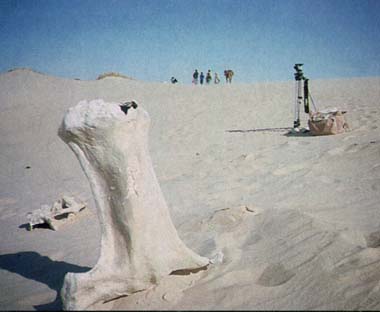Stephen R. Bissette
is an artist, writer and film historian who lives in Vermont. He is noted for, amongst many things, his long run as illustrator of
SWAMP THING for DC Comics in the 1980's and for self-publishing the acclaimed horror anthology
TABOO and a 'real' dinosaur comic
TYRANT (R). For the past several months Steve has been gracious enough to share with us his eloquent thoughts on the history of ‘dinosaur’ comics in his own column, “The Palaeo-Path”. We now turn the lens back on Steve in this interview conducted by e-mail over the past few weeks. (NOTE: Click to enlarge most images.)
PB (Palaeoblog): Throughout your nine-part "Paleo-Path" that you did for the Palaeoblog you've detailed your love for the old (and new) dinosaur comics. What specifically lead you to the creation of "Steve R. Bissette's Tyrant"?
SB (Steve Bissette): I had always dreamed of doing a genuine dinosaur comic, presenting the life of an individual prehistoric creature as vividly and accurately as humanly possible for a layman cartoonist.

I pitched the concept to a couple of publishers over the years, but no one was interested: they always wanted to change it to a science-fiction time-travel adventure, or insert human characters, which inherently conflicted with my concept. Eventually, in 1992, I simply began work on what I thought would be the first issue, but eventually became TYRANT #3 -- in fact, that issue's first page was the first completed page for the entire series.
Specifically, Dave Sim, creator and self-publisher of the recently-completed 300-issue CEREBUS comic, led me to it. 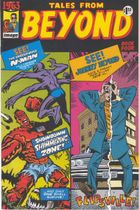 Dave
Dave knew I had always wanted to do my own dinosaur comic, and presented self-publishing as the ideal alternative to the ongoing indifference and rejection my proposal received from established comics publishers. The financial nest-egg to launch TYRANT was earned by my participation as co-creator, editor, and penciller for the Image series
'1963,' (right) which
reaped more than my entire 25-year career in comics cumulatively did -- which afforded me the two-three years I poured into TYRANT.
PB: When you created your 'look' for the T.rex for the series were you drawing from any specific sources?
SB: If you look at the four extant issues, my reconstruction of the
Tyrannosaurus rex clearly evolved -- as a character, as a reconstruction of prehistoric life, and in terms of illustrative clarity. My sources were many, but creating the 'look' of the
T. rex was more a matter of stripping away my own preconceptions and approaches to drawing the creature.
The mother T. rex in TYRANT #1 betrays the influence of my artistic heroes a bit too much -- a bit of
Ray Harryhausen here, a lot of
Joe Kubert there -- and
it wasn't until #3, really, that I was arriving at a T. rex that was more influenced by the advice and guidance of more contemporary information, research, texts, and specific individuals (yourself included, Michael!) who are paleontologists, and know the hard science I do not. So, to answer your question, while the impetus came from my life-long love of the work of artists like
Charles Knight,
Zdenak Burian,
Ray Harryhausen, and Jim Danforth, TYRANT's T. rex was the result of UNLEARNING as much as learning, and stepping away from those influences that were rooted in outmoded perceptions of
T. rex, its world, and how it lived.
PB: What were some of the recent breakthroughs in palaeontology that you incorporated into your book?
The eye-opening revelations of the past two decades, including the dramatic
T. rex fossil discoveries and subsequent analysis, including
Sue [
the now famous Field Museum T.rex -- PB], were central to the look, feel, and content of TYRANT.

I had conceived my planned presentation of life in-the-nest, and the growth of the surviving three
T. rex siblings, as a means of addressing and entertaining both Horner's and Bakker's theories on
T. rex behavior -- including diet -- but, alas, I didn't get that far in the series before having to pull the plug. The then-recent articles and texts on dinosaur eggs were of course vital to TYRANT #3, as were embryology texts on birds and reptiles, specifically alligators, crocodiles, and collared lizards studies.
 In the formative stages of the series, the book WARM-BLOODED DINOSAURS and the work and writings of Jack Horner and Robert Bakker were key
In the formative stages of the series, the book WARM-BLOODED DINOSAURS and the work and writings of Jack Horner and Robert Bakker were key, but I have to say my membership to the
Society of Vertebrate Paleontology and participation in the annual conferences for too-short-a-time (approx. 1995-96) were vital. By TYRANT #4, I was really feeling some measure of comfort and access that I'd longed for, including the ability to freely contact interested paleontologists when I had specific questions on their respectives areas of expertise; I cited all their names and my sources regularly in
'The Gizzard' footnotes section of every issue.
PB: In the few years since you wrote the introduction to Jim Lawson's "Paleo" that we converted into the "Paleo-Path" column, there have been other dinosaur-related books that have come out, as well as a few that were skipped over in your column. Are there any books that you'd like to comment on here?
SB: Forgive me, but
I'm currently writing a revised, expanded version of the PALEO PATH essay -- I'll be covering most of the missing there!
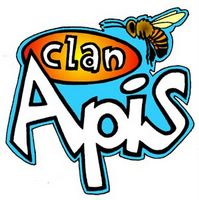
I would, however, like to recommend an excellent graphic novel that in no way concerns dinosaurs, but does present an innovative and completely captivating approach to dramatizing the lives of living creatures:
Jay Hosler's CLAN APIS.
It dramatizes the birth and life of a single honey bee in a hive, and it's just an amazing piece of work on all levels,
a real breakthrough in the wedding of science with comics, thoroughly engaging, entertaining, and enlightening for all age levels. By proxy, it sets a new standard for all comics to follow that are depicting the lives and behavior of animals -- and that's definitely revelent to the Paleo Path essay, and TYRANT.

PB: For a number of years you edited and published the critically acclaimed anthology "Taboo". Are there any interesting dino- or paleo-related horror stories you could recommend to our readers?
SB:

Actually,
I have a perverse appetite for the earliest prehistoric fiction, written from the late 19th to early 20th Century, including Jack London's gem
BEFORE ADAM and H.G. Wells's STORIES OF THE STONE AGE, from which all 'prehistoric tribal man-and-woman' novels sprang. I love and occasionally revisit what might be the first sympathetic dinosaur novel, BEFORE THE DAWN by
"John Taine," the pseudoname of mathematician Eric Temple Bell. There's some fantastic imagery in there, and Bell also scribed my favorite 'arctic lost world' novel
THE GREATEST ADVENTURE,
which proposed a sort of hyper-evolved lost world populated by mutant saurians.
One of my favorite semi-horrific dinosaur short stories from the very early genre years is an obscure oddity entitled "
The Monster of Lake Lametrie" by Wardon Allan Curtis, published in 1899,
in which a man's brain is transplanted into the skull of a surviving Elasmosaurus living in a remote mountain lake in Wyoming; Sam Moskowitz included it in his
anthology
SCIENCE FICTION BY GASLIGHT, and it's well worth seeking out. I'll also have to cheat a little and cite
Nigel Kneale's absolutely brilliant teleplay
QUATERMASS AND THE PIT as
one of the most chilling, imaginative, and potent sf horror works grounded in imaginary paleontology (a London tube excavation unearthing evidence of Martian tampering with prehistoric man's evolution, inadvertantly opening a
Pandora's Box of horrors and triggering apocalyptic 'race wars' between modern descendents of divergent 'strains' of humanity). In a way, Kneale was fleshing out a post-Darwinian horror concept H.G. Wells introduced in his novella THE CROQUET PLAYER, which I also recommend; it's a sort of primal ghost story, if you will.
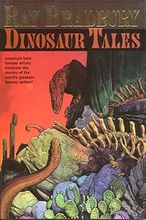
For flat-out dinosaur horror, improving on the usual JAWS-inspired 'primordial croc/shark' stuff that surfaces from time to time (MEG, etc.), I quite enjoyed John Brosnan's novel
CARNOSAUR (written under his pen name "Harry Adam Knight"), which was better than Adam Simon's film adaptation, though I enjoyed that, too. Ray Bradbury's romantic anecdote "The Foghorn" is forever burned into my memory -- still, nothing, but nothing beats Ray Bradbury's “
The Sound of Thunder.” There are more and more days I wake up to the latest news of more hideous antics of the current US administration and wonder what idiot stepped on the butterfly.
PB: A few years back you announced your retirement from the world of comics. Despite this you have a strong fan base. Is there any way you could be enticed back into continuing the Tyrant story?
SB: Enticement isn’t the issue, really. I won’t go into all the issues regarding my pulling the plug on Tyrant; suffice to say, it wasn’t viable for me to earn a living any longer in comics, and nothing has changed in that regard.
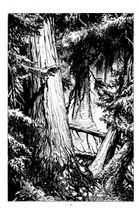
I don’t mean to sound defeatist, but I have to be pragmatic. The only offer from a publisher regarding Tyrant was laughable, and the market I produced Tyrant within simply no longer exists. I regularly turn down offers for me to work, essentially, for free -- nothing up front, whatever monies earned paid on the back end -- which is hardly tempting. If that were viable for me, I’d still be doing Tyrant, but the
financial risks of self-publishing Tyrant since the mid-1990s implosion of the comics direct sale market have only increased since I closed up shop in ‘97 and retired from comics in ‘99.
I recently wrote a comics script for my friend Jim Lawson for his fine dino comic Paleo --depending how that goes, that could lead to something. It certainly whet my appetite to return to Tyrant, but the fiscal reality isn’t condusive to that. When I was doing Tyrant, I lived and breathed the project; that simply isn’t possible for me now.
PB: You've mentioned on you Comicon.com website that you're going to start teaching this year. Can you tell us a little bit more about this?
I’ve been tutoring, teaching, and lecturing off and on for over fifteen years now, to all ages, from kindergarten to Yale graduate students. When James Sturm invited me last year to roll up my sleeves and get involved in his new experimental college,
The Center for Cartoon Studies in White River Junction, VT, it seemed worthwhile, and a viable way to re-engage with comics.
I retired from the industry, not the medium, and passing on what I know is important to me while I’ve still time to do so. That such a place was taking shape in my home state, about a 90 minute drive from my home, was an astounding bit of luck. Also, it felt so right: my comics career began in 1976-78 as a first-year-ever student at Joe Kubert’s experimental comics college,
The Joe Kubert School of Cartoon and Graphic Art, Inc. in Dover, NJ.
The Kubert School was a grand adventure, and redirected my life and energy for decades. Now, I’ll be ‘returning the favor,’ if you will, on the other end of the classroom, as an instructor at a new comics college. It feels like a great, new adventure, and I’m looking forward to it.
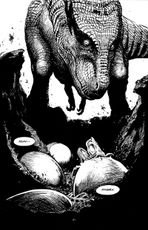
We’ve had our first faculty meeting, and James Sturm and Michelle Ollie have put together a terrific group of instructors -- cartoonists, writers, poets, fine artists, etc. -- and the orientation to comics and graphic novels is quite different from the industry-focused ‘trade school’ orientation of the Kubert School I attended: this is a liberal arts education, with comics as the core. I don’t see the two schools as competitors, but complements to one another, and suspect there will in time be productive cross-over and collaborative opportunities, if everyone can get past the initial impetus to compete. I suspect students dissatisfied with, say, the industry-orientation of the Kubert School might find CCS more appropriate to their path, but the opposite will be true, too: those itching to work in the industry of comics, or in populist genres for established publishers, may find the orientation of the CCS contrary to their interests, which would be better served by the Kubert School. I’m speculating here,
but it seems to me the two schools philosophically complement one another, and should build bridges to serve the interests of the students. Maybe I can serve as a bridge-builder in time, having graduated in the first class of the Kubert School and benefitted enormously from that, and now teaching at the CCS, which I also think will prove enormously fruitful. Anyhoot, I’ll be teaching comics history first semester, and we’ll see where it goes from there. The website is at:
http://cartoonstudies.org.
PB: Although many of the readers of this blog know you primarily as a writer/artist/editor in the comic book field, your interests and publications run much deeper than that. Please talk a bit about some of your other projects and what's on the horizon for you.
SB: Where to begin?
I’m pulling together a collection of my short stories and writings, including my Hellboy story, doing up some original illustrations, and collecting them together with the short stories and poems of my friend Roderick Bates; we’re putting that out as
the one-shot anthology entitled All That Lovecraft Loathes, which Black Coat Press is publishing later this year.

I’m also working on a couple of novels, but haven’t found a home for those projects as yet, so we’ll see.
I’ve written extensively on cinema and comics since 1988, and will be gathering those essays, interviews, and articles into a series of books, which will be forthcoming from
Black Coat Press later this year and next. My first love is dinosaurs, and that will be the subject of one book, including
the revised, expanded version of “The Paleo Path” I referred to earlier, and my interviews with special effects maestros Ray Harryhausen and Phil Tippett.
My second love is horror, and that will fuel a series entitled Gooseflesh: The Secret Histories of the Horror Film, which series will cover everything from underground horrors to Abel Gance’s J’Accuse, The Brain That Wouldn’t Die to Andy Warhol, The Sadist to fundamentalist Christian horror movies, Alejandro Jodorowsky to Buddy Giovanazzo. My current preoccupation is a book series on Vermont and New England film and video, Green Mountain Cinema (below); the first volume came out at the end of last year, and is available at:
http://blackcoatpress.com/greenmountaincinema1.htm
Green Mountain Cinema II will be out this summer, and I have two more volumes almost completed, including a special 50th Anniversary celebration of Alfred Hitchcock’s The Trouble With Harry, which was set and partially filmed in Vermont.

I continue to write for any and all venues, from the local newspaper to magazine like The Video Watchdog. When the invitation is extended, I also contribute to whatever book projects will have me.
I’m in very good company in No Such Thing as a Free Ride? A Collection of Hitchers’ Tales, edited by Simon and Tom Sykes, which just came out in the UK from Cassell -- and I just contributed an essay to another great collective project, Kim Newman and Stephen Jones’s Horror: Another 100 Best Books, which will be out toward the end of this year from Carroll & Graf.
I still keep my hand in the ink a bit by illustrating at least one book a year, as I have since 1989; last year I illustrated The Drifting Soul, a novel by Matt Spencer, and this year I’m working on illos for Paul Redmond’s Vietnam diary, as well as the Bates & Bissette short story anthology. And yes, there
will be at least one dinosaur in there.
PB: Thanks Steve. Good luck with all your projects! You have a open invitation to contribute to the Palaeoblog anytime.
Visit Steve's own website
HERE.
Note: The Palaeo-Path will continue as an irregular feature here at the Palaeoblog as a forum to discuss (usually) some the personalities behind your favourite dino-related graphic stories & art.
S.R. Bissette's Tyrant is © & ® S. R. Bissette. Cerebus is © Dave Sim; 1963: Tales From Beyond © Alan Moore, Rick Veitch, & Stephen R. Bissette; N-Man is © and TM Stephen R. Bissette; Clan Apis is © Jay Hosler.
Thanks to the Digital Dream Machine Blog for the great Tyrant scans!.

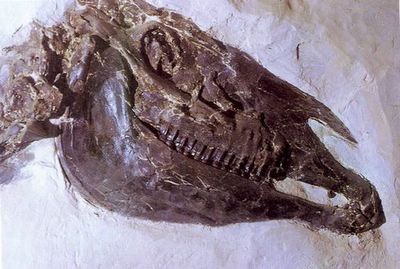










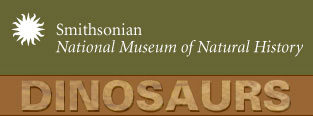

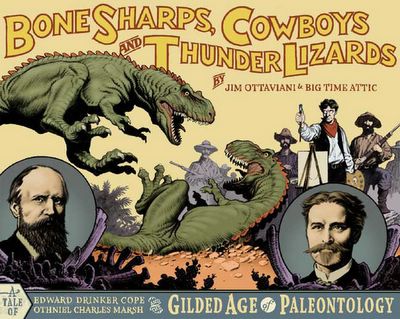



 The
The 










